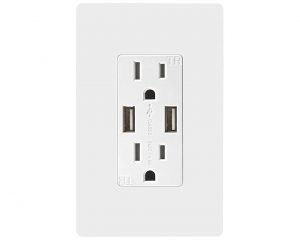Not so long ago blockchain was being touted as the hyper-secure, single source of truth that would solve all manner of business problems. Some of that was overhyped.
Even though distributed ledger technologies (DLTs) have matured a lot over the past few years the promise of these technologies has far outpaced the reality of their adoption.
According to a new Forrester research report, Blockchain In 2020: A CIO’s Guide To The 10 Most Prevalent Myths, the idea that mathematically immutable repositories of data and information would rapidly replace existing, trust-based models has not come to pass; nor will it anytime soon.
SEE: How blockchain will disrupt business: A special report (Free PDF) (TechRepublic)
There are many reasons listed in the report, said lead author Martha Bennett, a vice president and principal analyst at Forrester, but, overall, there is just a lot of misunderstanding about what the technology can and can’t do. Many of the qualities people assume are inherent in the technology, for example, have to be carefully architected in.
“The hype was just that, hype,” she said. “Firstly, DLT was presented as if it was available in the shape of fully-fledged solutions that were ready for deployment, as opposed to the nascent technology that it was, and still is. Secondly, no technology can possibly achieve what was being promised of DLT. It’s about architecture, well-written code, maintenance, and of course, the governance model.”
Here are the myths outlined in the report.
10 most common blockchain myths
- Blockchain and DLT mean the same thing: Not so much. A blockchain is just one type of DLT. There are many such technologies, and not all of them are blockchains. Just like using the term Xerox to describe all photocopies, “blockchain” is being used to refer to all types of DLTs regardless of underlying technology or architecture but, at this point in the technology’s evolution, it’s a distinction without a difference, Bennett said. This is why the report itself references all DLTs as blockchains.
(Because of this, we too will refer to all DLTs as blockchains in this article since the report makes no distinction regarding the underlying technologies being cited.)
- Blockchains will eliminate the need for intermediaries in transactions: While they may change the role of these individuals and organizations, DLTs will not eliminate the role they play in facilitating, verifying, or closing transactions. “The only way to cut out third parties is for a consumer or business to interact with a blockchain directly,” the report said. “But even in scenarios where ecosystem partners deal directly with each other at the expense of existing third parties, it doesn’t mean third parties will no longer be part of the mix. And let’s not forget that the world of cryptocurrencies is full of trusted third parties in the shape of wallet providers and cryptocurrency exchanges.”
- Blockchains are decentralized: This is only partially true. By definition, DLTs are distributed across various nodes on a network but that does not mean they have no form of centralized control. There are three main types of blockchains: public (open to anyone), private (by invitation only), and permissioned (a mix of both public and private).
“You don’t want a system that allows unaccountable parties to just seize control,” the report said. “But it’s equally untenable to have nobody who can take control when something goes wrong. In the context of enterprise blockchain networks, there are also functions that are best carried out by a designated party to minimize risk and increase efficiency.”
- Blockchains are trustless: An oft-cited goal of blockchains is to facilitate transactions directly between two parties who do not know one another–sidestepping the need for a third-party intermediary who takes on the risk of default, usually for a fee. But, as in all things, there is still a strong element of trust that blockchain users must assume.
“Mathematical principles alone cannot make a new trust model work; you also need a well-designed, well-implemented, and well-maintained governance model,” the report said. “For example, participants need to trust the mathematics and cryptography, and they must trust that the code will always function as intended. They also need to trust those who effectively control the respective networks: The miners who add blocks to the chain and the developers who can modify the core code.”
SEE: COVID-19: IBM using blockchain to connect pop-up medical mask and equipment makers with hospitals (TechRepublic)
- Blockchains are immutable: Blockchains can be changed through recomputing the chain back to a certain date. That approach “erases and recreates history,” the report said. The other method is through forking the chain, which preserves historical data, code, and transactions but causes the blockchain to work differently going forward. They can also be hacked, but this is expensive to do. Although bad actors have taken over control of blockchains like Ethereum Classic in the past, the report does not state if they were able to alter the chain itself.
- Blockchains are inherently more secure: This isn’t the case, either. If a bad actor gains access to a blockchain they can execute whatever actions their credentials (legitimately obtained or not) allows them to do. Smart contracts (basically business process automation (BPA) that is initiated by events recorded on the blockchain) can open up security holes if they are not coded well or properly secured.
- Blockchains are “truth machines“: Nope. Although preventing fraud is an oft-cited use case for blockchains, the reality is more akin to garbage-in, garbage-out (GIGO). If the data being recorded on a blockchain is wrong or intentionally misrepresented it will become part of that transaction’s permanent record. “No technology, blockchain or otherwise, can prevent off-chain fraud on its own,” the report said.
- Blockchains automatically improve data quality: Just as in the last myth, GIGO applies here as well. A blockchain is a data repository, not a fact-checker. Like any database, it dutifully records what is entered into it but it does not by itself check to make sure the data is accurate.
- Transparency can only be good: In a business setting, uncontrolled transparency isn’t necessarily a good idea. “For example, if all participants in a trading network can see everybody’s trading details in real time, they could exploit this to trade against each other; total visibility could also lead to price fixing and cartel formation,” the report said. Also, while the blocks in a blockchain are cryptographically hashed making them nearly impossible to change, the data inside those blocks is not necessarily encrypted by default.
- Smart contracts will make lawyers redundant: As mentioned in No. 6 above, smart contracts are not really contracts. They are BPA that trigger other events when certain parameters are met. “Despite what many blockchain supporters may say, code is not law—the law is the law,” the report said. “Even if participants in a blockchain network wish to abide by the results of smart contract execution, they will still need a separate legal agreement that states as much and captures other standard contractual principles.”
With so many myths and misconceptions about blockchains, it may seem like there aren’t any good business reasons for using them, but that is not the case, Bennett said.
“DLT-based networks, or blockchains, come into their own when it comes to supporting multi-party processes around trusted data, some, but not all, of which is shared among those parties and may also be open to inspection by others,” she said. “A key reason companies turn to DLT when they want to improve processes or, indeed, find entirely new ways of running them, is the desire not to rely on a single central party administering or owning the data and metadata generated by that process.”
Also see

Image: phive2015, Getty Images/iStockphoto
Source of Article




